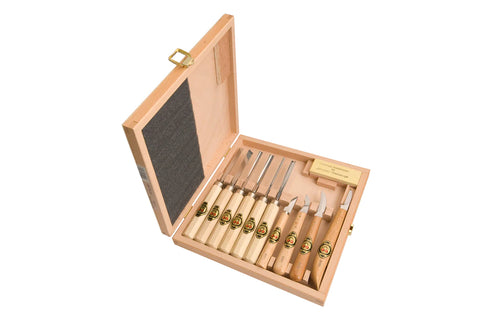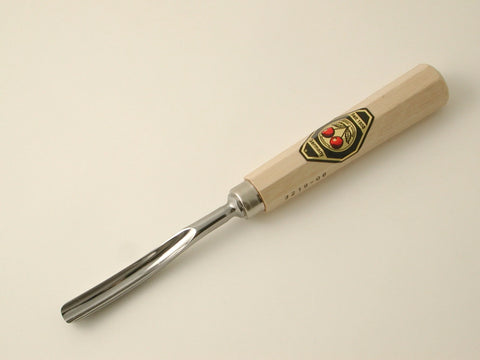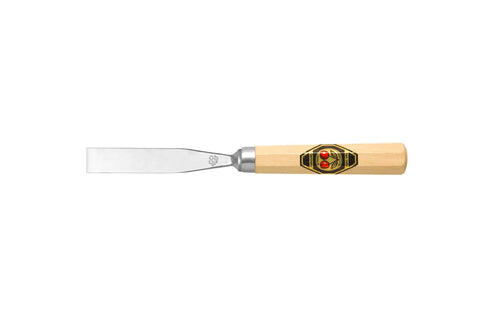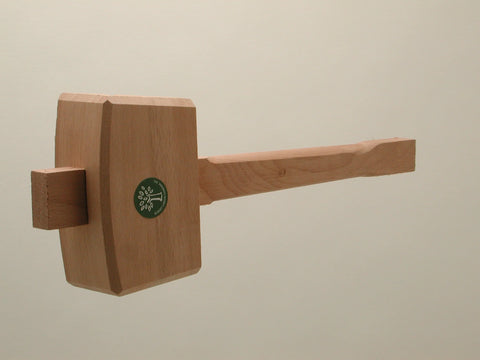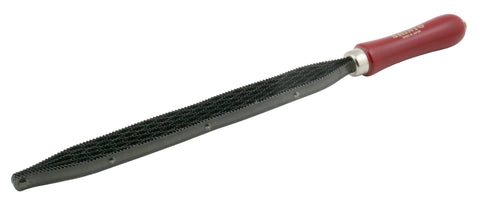The Art of Wood Carving Tools: Unveiling the Craftsmen's Arsenal
Posted by Mark Newton on
The Art of Wood Carving Tools: Unveiling the Craftsmen's Arsenal
Wood carving is an ancient and revered craft that has been practiced for centuries across cultures worldwide.
At the heart of this art lies a diverse array of tools that are essential for transforming blocks of wood into intricate works of art.
In this comprehensive guide, we will explore the world of wood carving tools, including their types, shapes, sweeps, handles, and the rich history that surrounds them.
We will also highlight the unique projects that only wood carvers can bring to life.
Types of Wood Carving Tools:
Wood carving tools can be categorized into three main types: cutting tools, shaping tools, and finishing tools. Let's explore each category in detail:
1. Cutting Tools:

- Carving Knives: These are the fundamental tools for precision carving, with sharp, pointed blades that allow for detailed work.
- Chip Carving Knives: Featuring triangular blades, they excel in creating geometric patterns and delicate designs.
- Hook Knives: With curved, hooked blades, these are perfect for hollowing out concave shapes like spoons or bowls.
2. Shaping Tools:
- Gouges: Available in various shapes and sizes, gouges are essential for removing wood and shaping both concave and convex surfaces.
- Chisels: These flat-edged tools are used for creating straight lines, smoothing surfaces, and cutting grooves.

- V-Tools: Sporting V-shaped cutting edges, they are perfect for carving lines, letters, and fine details.
- Mallets: Often used with chisels, gouges, and V-tools to apply force for cutting and shaping wood.
3. Finishing Tools:
- Rasps and Files: These tools aid in refining and smoothing carved surfaces, removing imperfections, and adding texture.
- Sanding Tools: Sandpaper and sanding blocks help achieve a polished, smooth finish on the carved piece.
Understanding the Concept of Sweep:

The concept of "sweep" refers to the curvature or radius of the cutting edge on carving tools. Different carving tools have varying sweeps, ranging from flat to deeply curved.
The sweep of a carving tool is denoted by a number, with lower numbers indicating flatter sweeps and higher numbers representing deeper, more curved sweeps.
Carvers can select tools with specific sweeps to suit their carving needs, from shallow sweeps for fine detailing to deep sweeps for removing large amounts of wood.
Types of Handles:
Carving tools come with a variety of handle styles to accommodate personal preferences and specific carving tasks. Here are some common handle types:
- Traditional Octagonal Handles: These handles offer a classic and comfortable grip for general carving tasks.
- Pear-Shaped Palm Grips: Designed for working in tighter spaces and providing enhanced control, palm-shaped handles are ergonomic and popular among carvers.
- Ergonomic Handles: Some modern carving tools feature specially designed ergonomic handles that reduce hand fatigue during long carving sessions.
The History of Wood Carving:
The history of wood carving is a testament to human creativity and craftsmanship. Carving dates back to prehistoric times when our ancestors used rudimentary tools like stone knives. As civilizations developed, so did the art of carving. The Renaissance period saw the emergence of specialized carving chisels and gouges, which allowed for more intricate and detailed work.
Unique Projects in Wood Carving:
Wood carvers have the ability to create projects that set their craft apart from other branches of woodworking. Here are some examples of unique projects that wood carvers excel at:
- Relief Carving: This involves carving designs that appear to rise above the background, creating a three-dimensional effect. It's commonly seen in decorative panels, sculptures, and architectural details.
- Whittling and Figurine Carving: Wood carvers can craft intricate figurines, animals, and miniatures with exquisite detail.
- Spoons and Bowls: Carving artisans are known for crafting functional yet artistic spoons, bowls, and utensils.
- Decorative Panels: Wood carvers can create intricate decorative panels for furniture, doors, and walls, adding elegance to interior and exterior spaces.
In conclusion:
Wood carving is a timeless art form that has evolved alongside the development of specialized carving tools. These tools, with their various shapes, sweeps, and handles, empower craftsmen to bring their creative visions to life. The rich history and unique projects associated with wood carving make it a captivating and enduring craft, treasured by artisans and enthusiasts alike. Whether you are a seasoned carver or a novice, the world of wood carving tools offers endless possibilities for creativity and expression.
- Tags: Artisan tools, Carving, Carving techniques, Carving tools, Chisels, Craftsmanship, Gouges, Mallets, Sweep angle, Wood carving, Wood carving tools, Woodworking

